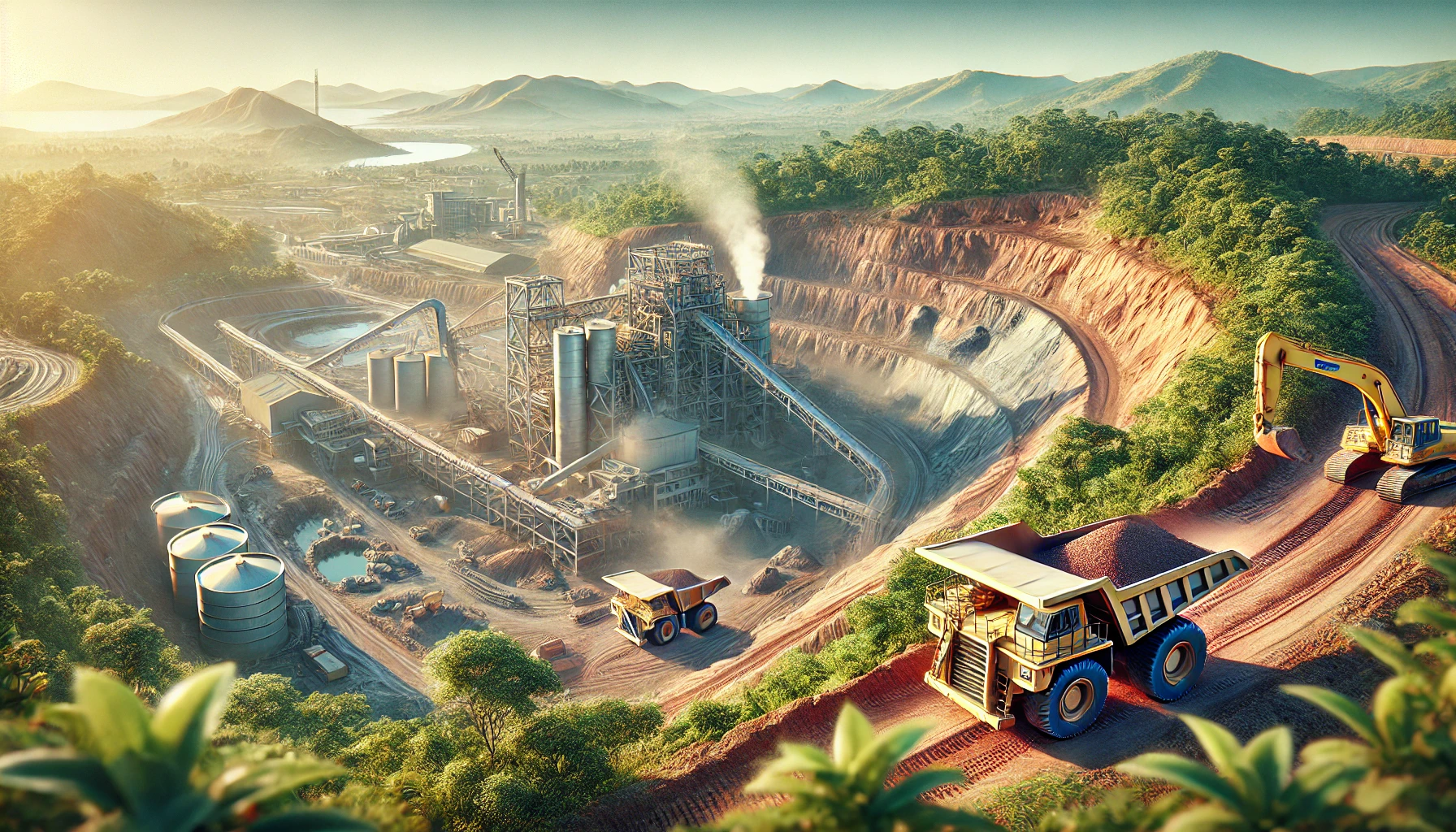
Key Highlights of Copper Mining in Zambia
Zambia, often referred to as the “Land of Copper,” is a global mining powerhouse and one of Africa’s leading producers of this red metal. Its mining sector has been the backbone of the country’s economy for decades, driving exports, employment, and infrastructure development. If you’re looking to understand mining in Zambia, this guide will walk you through everything you need to know.
1. Zambia’s Copper Legacy
Copper mining in Zambia dates back to the early 20th century when significant deposits were discovered in the Copperbelt Province. Today, Zambia ranks among the top 10 copper-producing countries globally. This strategic resource has made the nation a focal point for international mining companies and investors.
Key Regions for Mining:
- Copperbelt Province: Home to the historical core of Zambia’s copper mining activities, with cities like Kitwe, Ndola, and Chingola.
- North-Western Province: An emerging mining hub with newer mines like Kansanshi and Lumwana, contributing significantly to Zambia’s production.
2. Major Players in the Industry
The mining landscape in Zambia is dominated by a mix of global mining giants and local operators. Key companies include:
- First Quantum Minerals (FQM): Operates Kansanshi and Sentinel mines.
- Konkola Copper Mines (KCM): One of the oldest and largest mining operations.
- Mopani Copper Mines (MCM): Active in Kitwe and Mufulira.
- Barrick Gold: Runs the Lumwana mine in the North-Western Province.
3. Contribution to the Economy
The mining sector plays a pivotal role in Zambia’s economy:
- Exports: Copper accounts for over 70% of the country’s export earnings.
- Employment: Provides thousands of jobs, both directly in mining operations and indirectly in related sectors like transportation and construction.
- Government Revenue: Royalties, taxes, and corporate income from mining significantly bolster Zambia’s national budget.
4. Mining Processes and Techniques
Zambia’s mines employ modern techniques to extract and process copper:
- Open-Pit Mining: Common in large-scale operations such as Kansanshi and Lumwana mines. This method is suitable for shallow copper deposits.
- Underground Mining: Used in older mines like those operated by KCM and MCM.
- Smelting and Refining: Facilities such as the Nkana smelter process raw ore into finished copper products.
5. Opportunities and Challenges
Opportunities:
- Growing Demand for Copper: As the world transitions to clean energy and electric vehicles, demand for copper—essential for electrical wiring and renewable energy infrastructure—is surging.
- Exploration Potential: Zambia’s vast and underexplored reserves offer opportunities for new discoveries.
- Diversification: Adding value to copper through local manufacturing of wires and cables.
Challenges:
- Fluctuating Global Prices: Copper’s price volatility impacts profitability and government revenues.
- Infrastructure Constraints: Mines rely on outdated roads, railways, and energy systems, increasing costs.
- Environmental Concerns: Mining activities have led to deforestation, water pollution, and land degradation.
6. Government Policies and Initiatives
The Zambian government has implemented various measures to regulate and support the mining sector:
- Taxation: Mining royalties and corporate taxes contribute significantly to public finances. However, tax policies have sometimes created tension with mining companies.
- Local Content: Encouraging the involvement of local businesses in supply chains.
- Sustainability Efforts: Recent policies emphasize environmental responsibility and sustainable practices.
7. Sustainability and Environmental Impact
As mining expands, so does its environmental footprint. Key issues include:
- Land Degradation: Open-pit mines and waste rock dumps transform landscapes.
- Water Contamination: Mining runoff can affect local water sources.
- Community Displacement: In some cases, land acquisition for mining has displaced communities.
To address these concerns, many companies are adopting eco-friendly technologies, such as:
- Recycling water used in mining processes.
- Rehabilitating mined areas by planting trees and restoring ecosystems.
8. The Future of Mining in Zambia
The future of Zambia’s mining industry looks promising, fueled by:
- Increased Production Targets: Zambia aims to triple its copper output to 3 million metric tons annually by 2030.
- Technological Advancements: Automation, AI, and green technologies are shaping the next generation of mines.
- Diversified Mining: Expanding into other minerals like cobalt and nickel, which are also vital for renewable energy technologies.
Conclusion
Mining is the lifeblood of Zambia’s economy, contributing to its development while presenting opportunities and challenges. As the global shift to sustainability and renewable energy accelerates, Zambia stands poised to benefit from the rising demand for copper and other minerals. However, realizing this potential will require balancing economic growth with environmental responsibility and equitable resource management.
Whether you’re an investor, policy-maker, or an enthusiast, keeping an eye on Zambia’s mining sector is essential as it continues to shape the country’s future.

Our amazing team is always hard at work
Annie Kawandami
